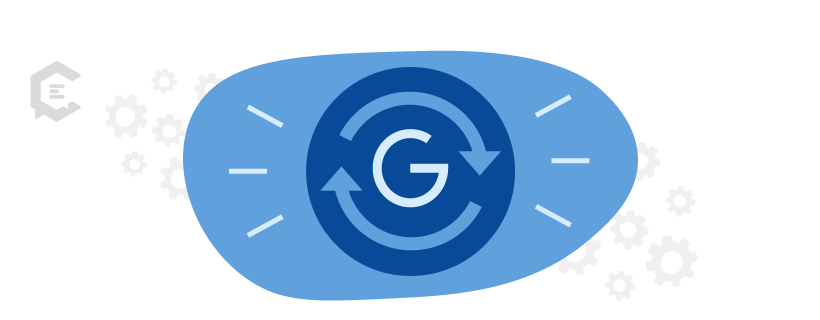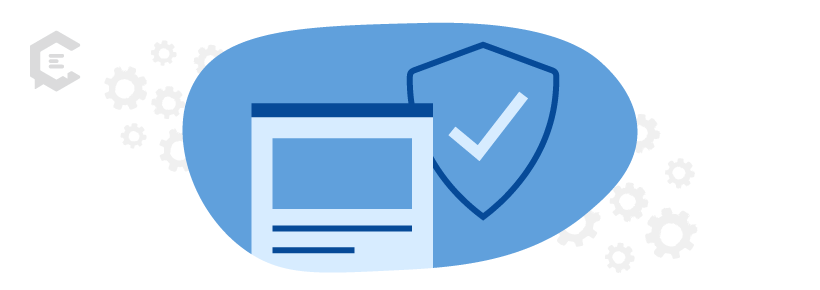Are you looking to drive organic traffic to your website? You need to stay up to date on SEO trends, namely Google’s core algorithm update.
In the past, Google updates had unique animal names like Panda or Penguin. These days, most Google updates fall under one umbrella: Google core algorithm updates.
What do these updates mean, and how do they impact your website ranking or marketing strategies? Here’s what you need to know — and how to keep your website ranking no matter what changes Google makes.
What is Google’s core algorithm update?
Google’s core algorithm updates are wide-reaching updates that occur a few times a year. Updates don’t generally target specific sites or strategies; rather, they’re designed to improve Google’s overall performance and deliver the most relevant content for search queries.
Google’s core algorithm is the set of rules Google uses to determine what website shows up when a user types in a specific search query. For example, if you type “Mexican restaurant near me,” the search engine performs millions of calculations in near real-time.
Where you are, for example. Which restaurants have the best reviews? Have any restaurant websites published spam or linked to shady sites?
Overall, Google looks at more than 2,000 factors to determine which site best answers your question. The most recent Google core algorithm update occurred in September 2022 and took several weeks to roll out.
How Google’s core algorithm update impacts you
Google’s core algorithm updates can have a significant impact on your website but sometimes remain unseen. In most cases, if you follow Google’s best practices and publish authoritative, helpful content and avoid black-hat practices, your site will see little to no impact.
However, some updates are more significant than others, so it’s essential to pay close attention to any changes Google makes. Even if Google doesn’t change anything, a competitor could sweep in and provide a better resource, pushing your site down.
If you rely on organic traffic to grow your business, Google’s core algorithm update needs to be on your radar.
How to protect your site from Google’s core algorithm update
Google’s constant updates can be frustrating for marketers and website owners alike. As soon as you figure out how to reach your audience, Google changes something, and you are back at square one.
The good news is that these core updates don’t target any specific practice. Meaning if you suddenly lose keyword ranking, it’s unlikely it’s due to a particular link or piece of content. Even better, Google has published a list of steps site owners can take to stay on the right side of their updates.
Here are steps you can take to protect your site from falling in the search rankings.
1. Focus on producing quality content
According to Google, if your page or site drops in the ranking after a core update, it doesn’t mean you need to fix anything. It just means that another site is doing a slightly better job answering users’ questions.
How do you prevent other sites from pushing you down in the search rankings?
Here’s what Google suggests:
- Share original insights, data, and reporting for higher-ranking content
- Answer questions thoroughly
- Provide new or interesting insights about topics your audience cares about
- Don’t just copy news/insights from other sources; add your own expert opinion
- Make sure headings and summaries are relevant and helpful
- Avoid exaggerated or click-bait titles and headlines
- Provide value to users
2. Pay attention to quality rater guidelines
Search quality raters are real people who look at Google search results and determine if the sites actually solve users’ problems or questions. Google uses insights from this team to better understand if their algorithm is working as intended.
So, what do search quality raters look for? Here are a few guidelines they follow:
- Does the page directly help users solve a specific problem?
- Does supplementary content serve a purpose, or does it detract from the page?
- Are ads distracting or annoying?
- Is the homepage easy to find from every page on the site?
- Who created the website/specific content? Is that person a trusted individual? (This is related to their E-A-T guidelines, which we’ll cover in the next section)
- Is the contact or about page easy to find?
- Do real people create the content?
- If your site is for a store or business, are customer reviews easy to find? Do they seem trustworthy?
While search rankers have no direct control over search results (meaning they can’t decide they like your site and rank you number one), Google uses their feedback to ensure updates are working correctly. This means following search ranking guidelines can help you stay on Google’s good side.
3. Follow E-A-T best practices
E-A-T stands for “expertise, authoritativeness, trustworthiness.” It’s a concept created by Google to determine which sites are trustworthy. It’s referenced repeatedly in Google’s search quality rater guidelines and can have an impact on how well your site ranks (though it’s not a direct ranking factor).
What does E-A-T actually mean? E-A-T is how Google determines if a website provides reliable, valuable content to readers.
For example, an article about new AI technology written by an AI professor at a trusted university is likely to be trusted more than an article written by a cosmetic brand.
Other factors that impact E-A-T include inaccurate or misleading content, content length, and the overall domain reputation.
4. Local SEO matters
Local SEO helps local users find your business now more than ever. Google recently made it easier for site owners with new tools and features, including the new Google Business Profile and tools to support local news. Use these to connect with customers, drive foot traffic, accept online orders, and much more.
Stay on the pulse of Google’s core algorithm update
Core updates occur regularly and generally don’t have a massive impact on search rankings. Most websites can expect to move up or down a few slots in the search results at any given time. This means you don’t need to re-vamp your entire site for each one of Google’s core algorithm updates.
However, it’s essential to keep an eye on these updates, so you can make adjustments to your site and your content as needed.
Want to create high-quality content your readers — and search engines — will love? ClearVoice can provide you with SEO-optimized content that answers readers’ questions, follows E-A-T best practices, and helps keep your site ranking high, no matter how many updates Google rolls out per year.






